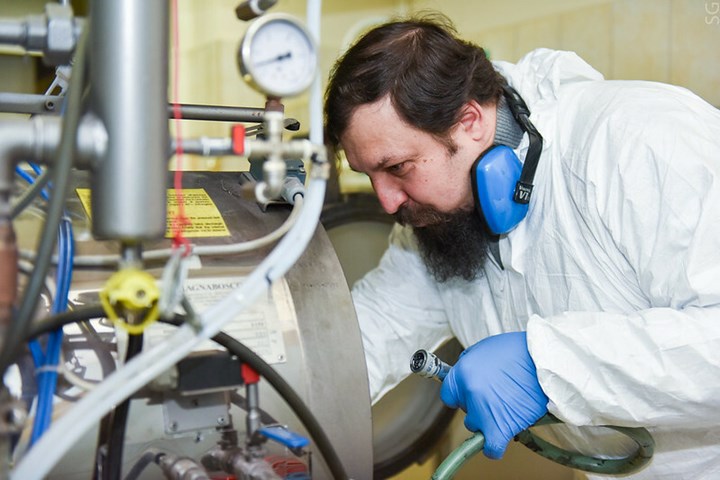Researchers propose new technology to produce composites with adjustable properties
MISIS University and Skoltech scientists develop a method to obtain carbon fiber-reinforced polyethersulfone composite materials for aviation with adjustable properties.

Photo Credit: MISIS University, Skoltech
Scientists at MISIS University (Moscow, Russia) and the Skolkovo Institute of Science and Technology (Skoltech, Russia) have developed a new technology for the production of a new, durable composite material based on carbon fibers in a polyethersulfone matrix. Due to the combination of low density, high strength and chemical stability at elevated temperatures, researchers say it can be used in aggressive environments, such as fuel cells, super-capacitors and next-generation aircraft engine components. The composite can also be easily recycled or disposed of, making it environmentally friendly. The study has been published in Polymers.
Polyethersulfone powder, an amorphous thermoplastic polymer, is said to exhibit excellent mechanical properties and is resistant to high temperatures, steam and various chemicals. Unlike epoxy, it is recyclable.
During this research, the surface of the carbon fiber was modified by thermal oxidation, where a thin layer comprising a large number of oxygen-containing functional groups was formed on the surface of the carbon filaments. This was reported to facilitate better adhesion of the fiber to the polymer matrix. Moreover, in order to impregnate the carbon preform — which is traditionally performed via high-pressure impregnation of the polymer melt — researchers dissolved the polyethersulfone powder with an organic solvent at room temperature, after which the modified carbon fiber was impregnated with the resulting solution. Test samples were then dried at 100°C for four hours, and the preform was placed in a mold where the workpieces were being formed under pressure at 350°C for 30 minutes.
Researchers note that final property materials can be adjusted depending on the degree of filling the polymer matrix with fibers.
“Speaking about the possibilities of the material application, we need to look at the specific product in which will be used, since it affects working conditions in the structure, requirements for strength and maximum permissible deformations,” Ph.D. Andrey Stepashkin, senior researcher at the MISIS University Center for Composite Materials and a co-author of the work, explains. “Accordingly, the reinforcement pattern changes, and the degree of filling (fiber content) will also vary. But, if we talk, for example, about materials for aircraft construction, the optimal content of carbon fibers will be more likely in the range of 60-70% of the total weight of the structure.”
Read more about the project in Polymers.
Related Content
-
TU Munich develops cuboidal conformable tanks using carbon fiber composites for increased hydrogen storage
Flat tank enabling standard platform for BEV and FCEV uses thermoplastic and thermoset composites, overwrapped skeleton design in pursuit of 25% more H2 storage.
-
JEC World 2024 highlights: Thermoplastic composites, CMC and novel processes
CW senior technical editor Ginger Gardiner discusses some of the developments and demonstrators shown at the industry’s largest composites exhibition and conference.
-
PEEK vs. PEKK vs. PAEK and continuous compression molding
Suppliers of thermoplastics and carbon fiber chime in regarding PEEK vs. PEKK, and now PAEK, as well as in-situ consolidation — the supply chain for thermoplastic tape composites continues to evolve.















.jpg;maxWidth=300;quality=90)
